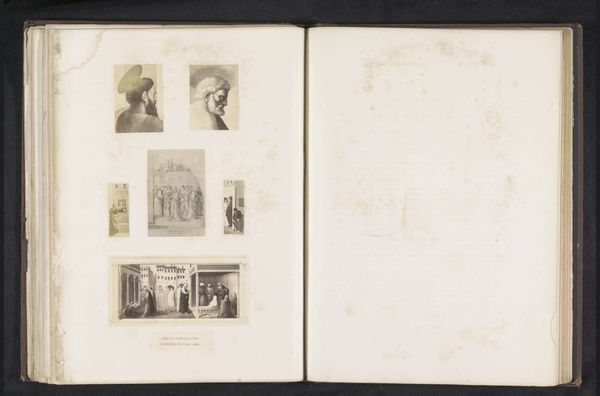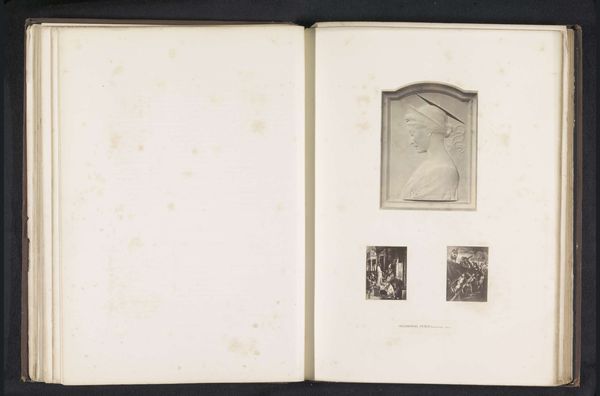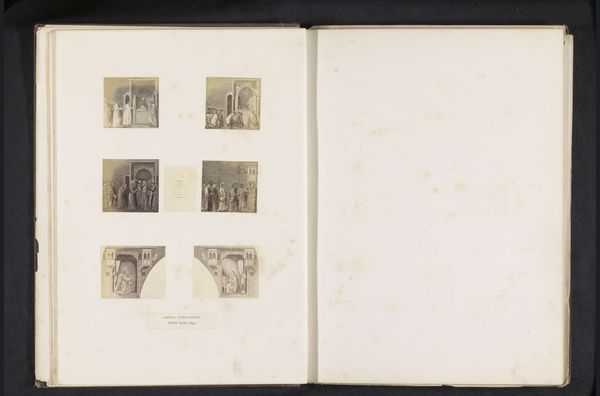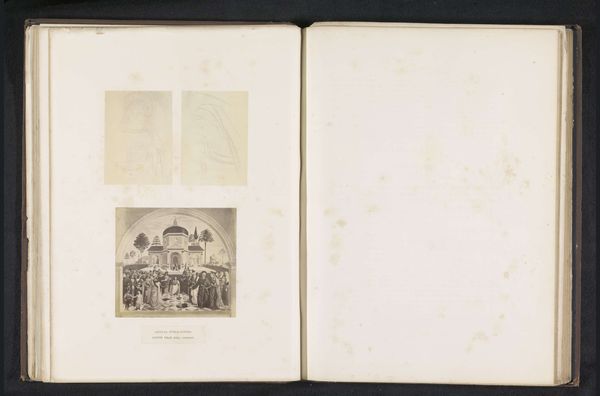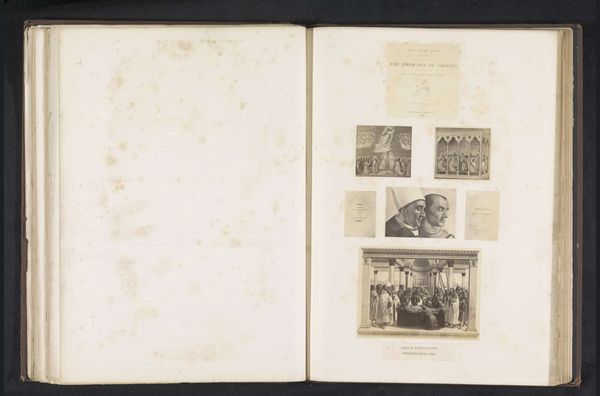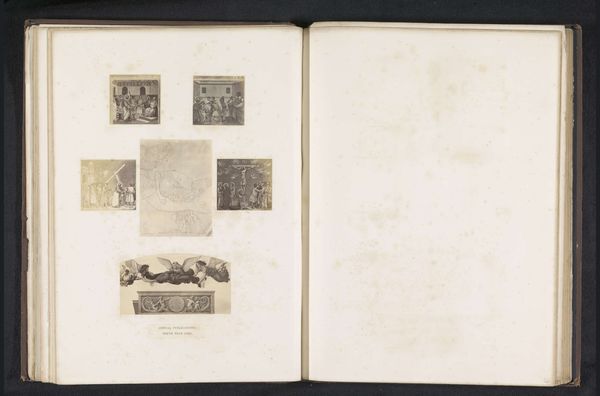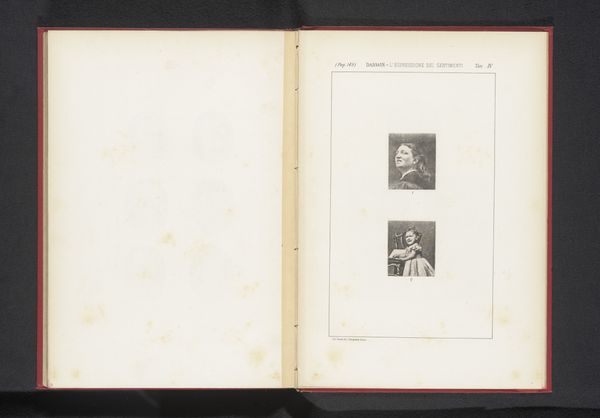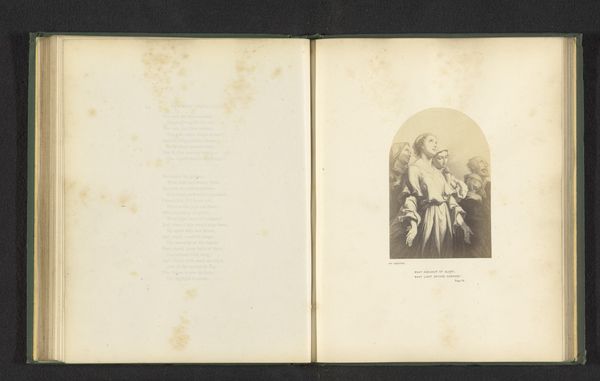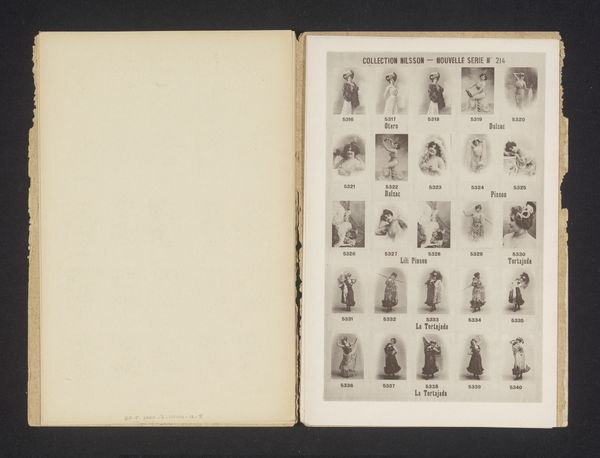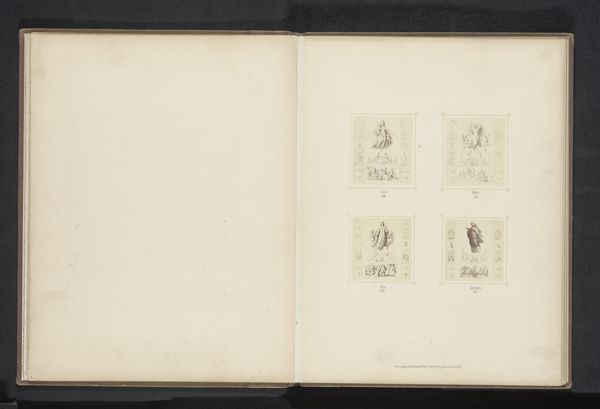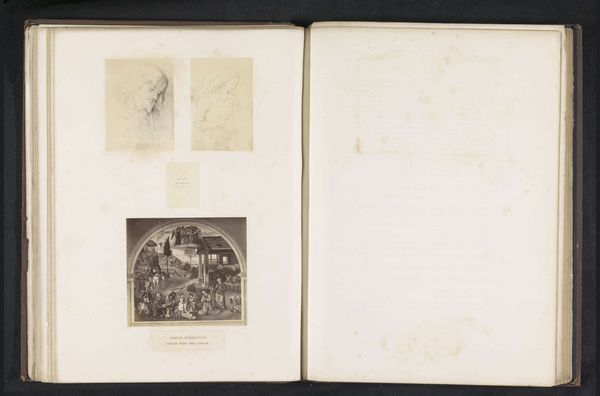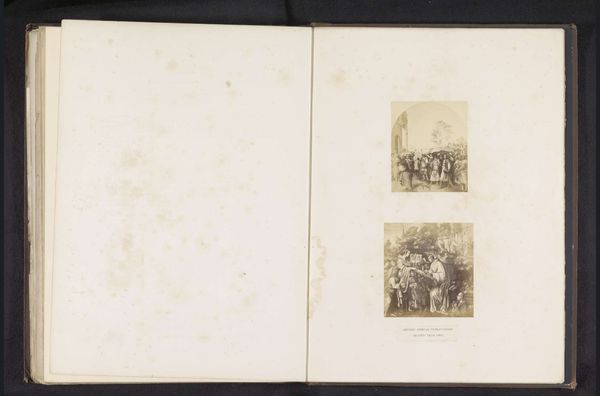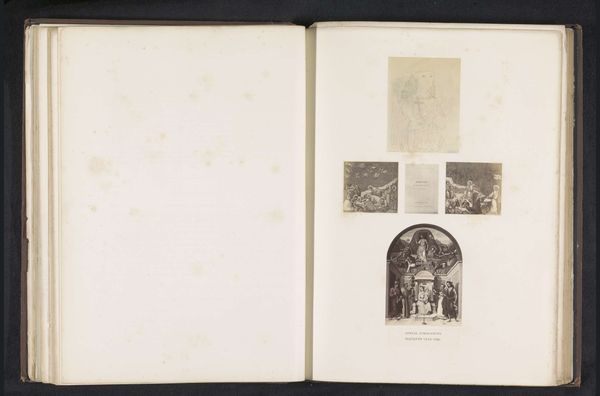
Zeven fotoreproducties van een publicatie door de Arundel Society met schilderijen van Hans Memling before 1869
0:00
0:00
print, photography, collotype
#
medieval
#
ink paper printed
# print
#
book
#
photography
#
collotype
Dimensions: height 378 mm, width 290 mm
Copyright: Rijks Museum: Open Domain
Curator: This photograph before us, dated before 1869, is titled "Zeven fotoreproducties van een publicatie door de Arundel Society met schilderijen van Hans Memling," currently held at the Rijksmuseum. Editor: At first glance, the faded photographs pasted into what seems like a book convey a distinct sense of historical remove, layers upon layers of reproduction. The small-scale renderings of what must have been vibrant paintings by Memling feel almost ghostly. Curator: Indeed. These are collotype and photographic prints, capturing paintings by the Early Netherlandish master Hans Memling as documented by the Arundel Society. The society played a pivotal role in the 19th century in popularizing art through reproductions. It begs the question: how did societies like Arundel democratize, and potentially sanitize, art from the Medieval era? Editor: That's fascinating. These photographic reproductions were accessible. Yet it raises interesting issues about how visual languages have been shaped by institutional distribution, creating power dynamics embedded in visual art consumption and education during the Victorian era. The photographs are mounted on the left-side page; the facing page is unmarked, as if still awaiting its cultural interpretation. Curator: Absolutely. We should consider that the Arundel Society's choice of Memling, a Northern Renaissance artist, suggests a specific aesthetic and cultural agenda. In that, the photographic copies not only represented paintings but also Victorian sensibilities in medieval aesthetics through an anonymous editorial voice. Editor: Do you think, Curator, that the availability of these reproduced images may also have served the cultural and political project of standardizing artistic knowledge at a critical juncture of defining British and continental identities? How much of this dissemination was tied to creating a British-centric European visual landscape, even while featuring Continental masters? Curator: Certainly. It highlights the complicated interaction of class, culture, and consumption during the late 19th Century. Editor: Thank you, Curator. Thinking about this collection really contextualized the role reproductions play in framing our understanding of art history, challenging what we value and consume even now.
Comments
No comments
Be the first to comment and join the conversation on the ultimate creative platform.
